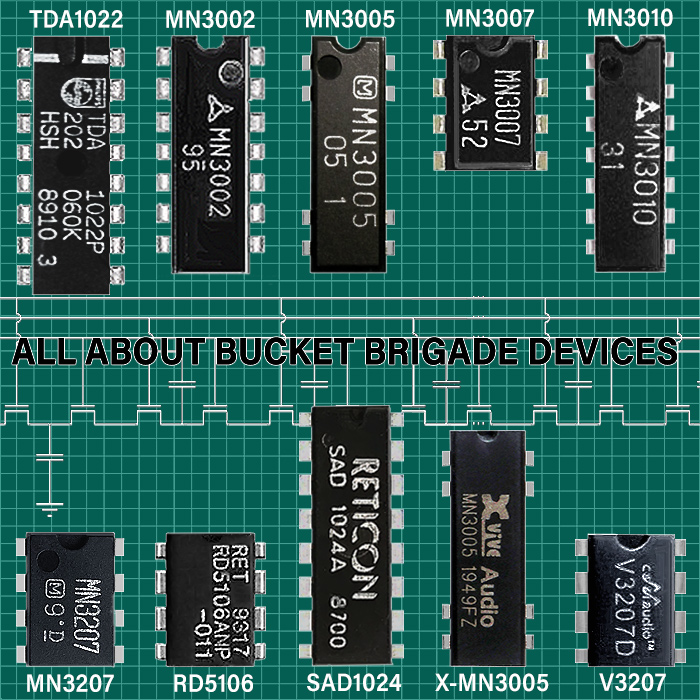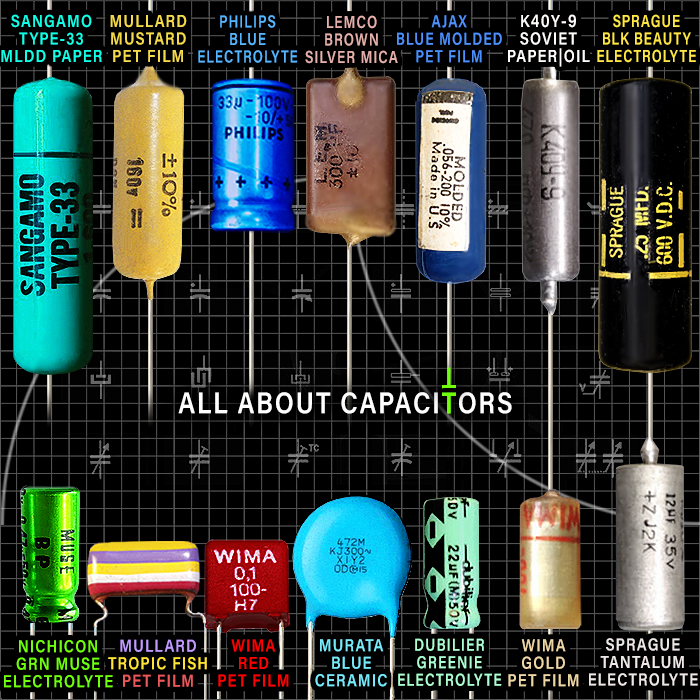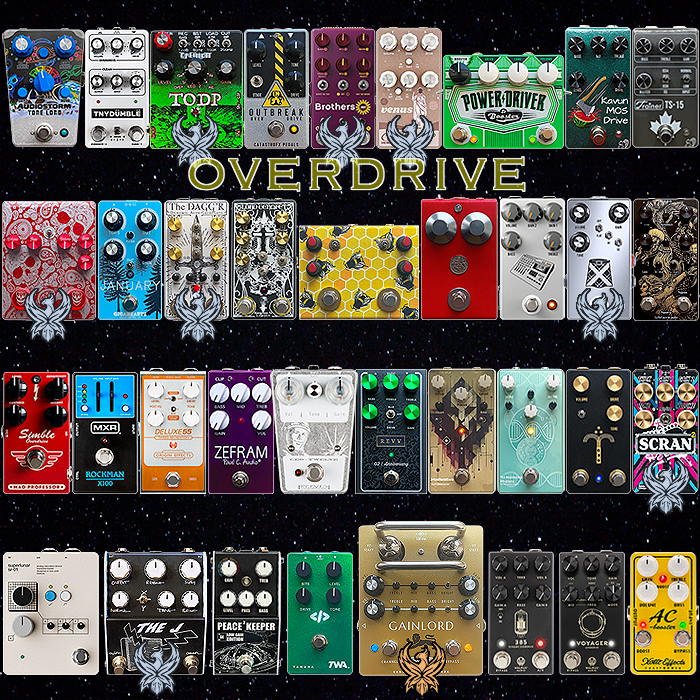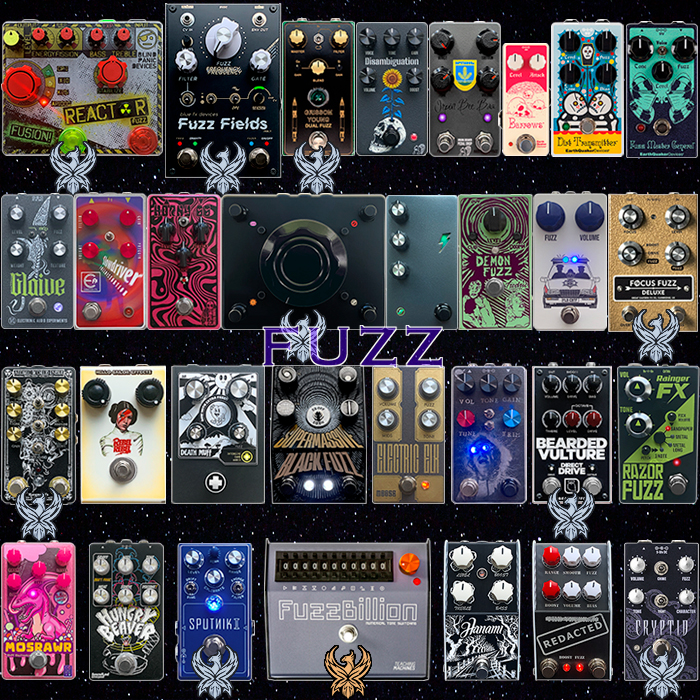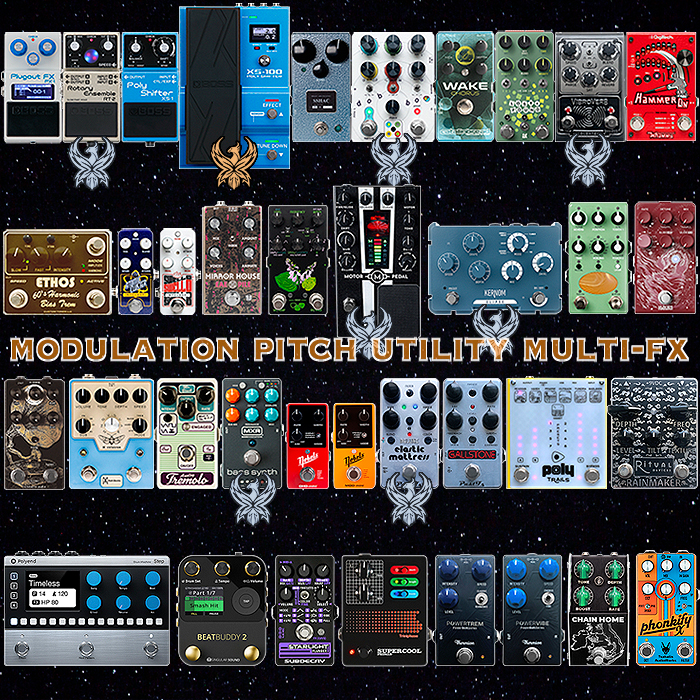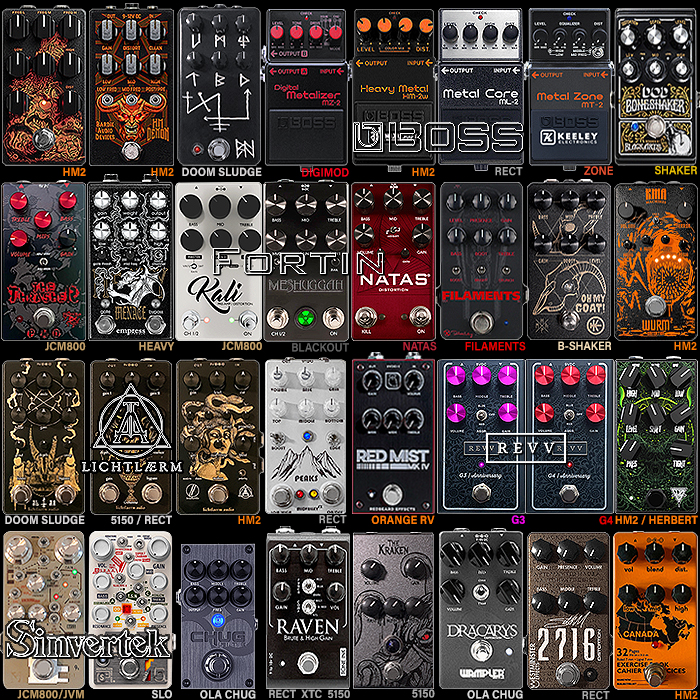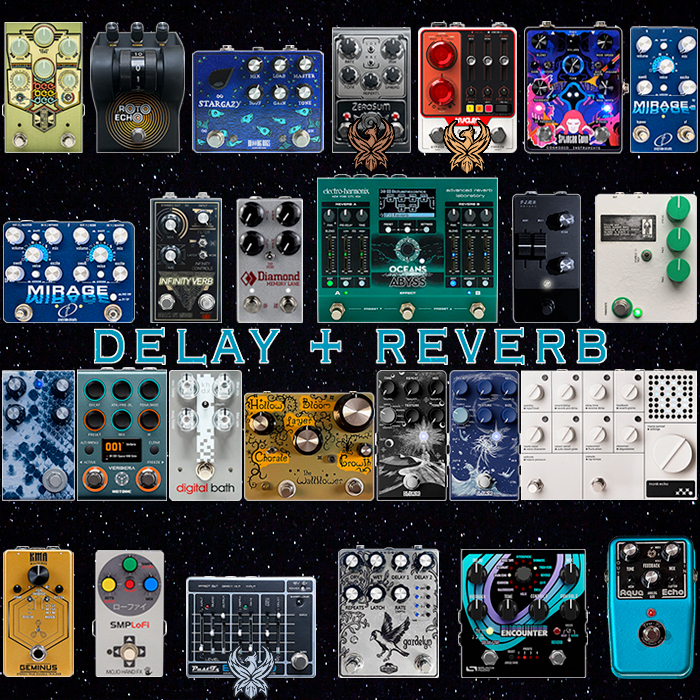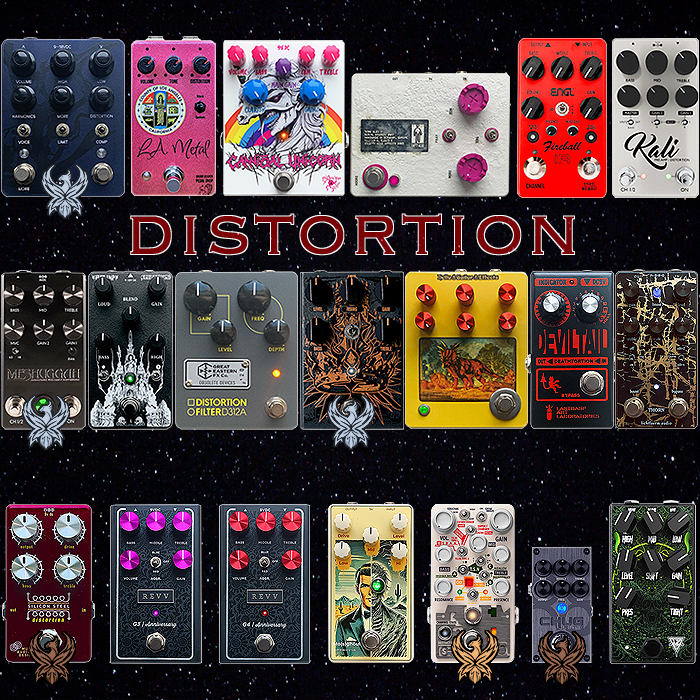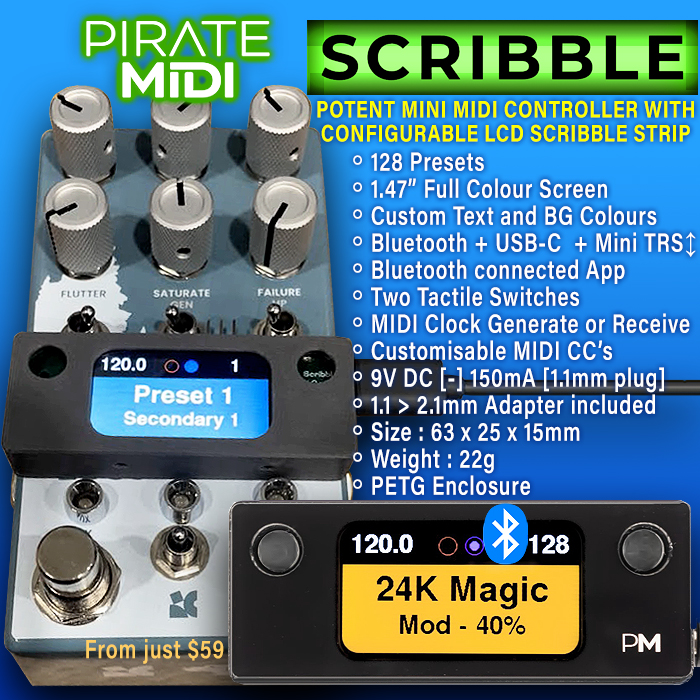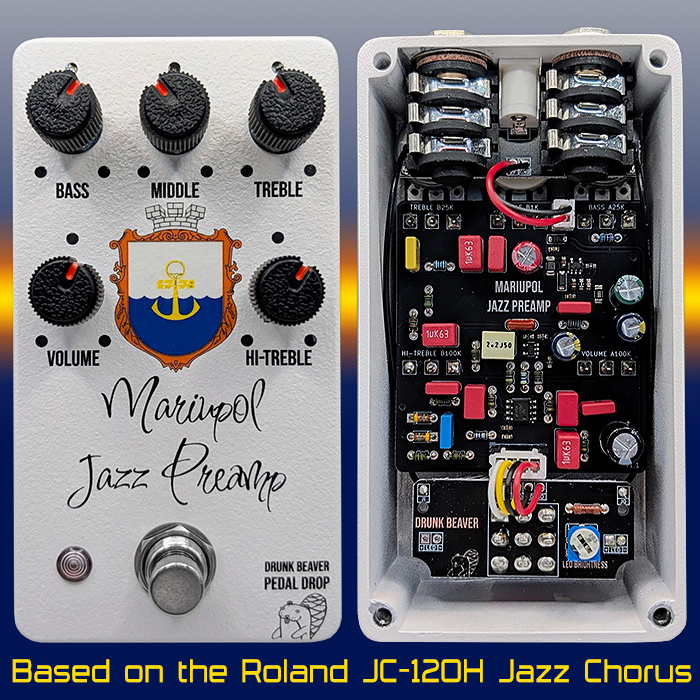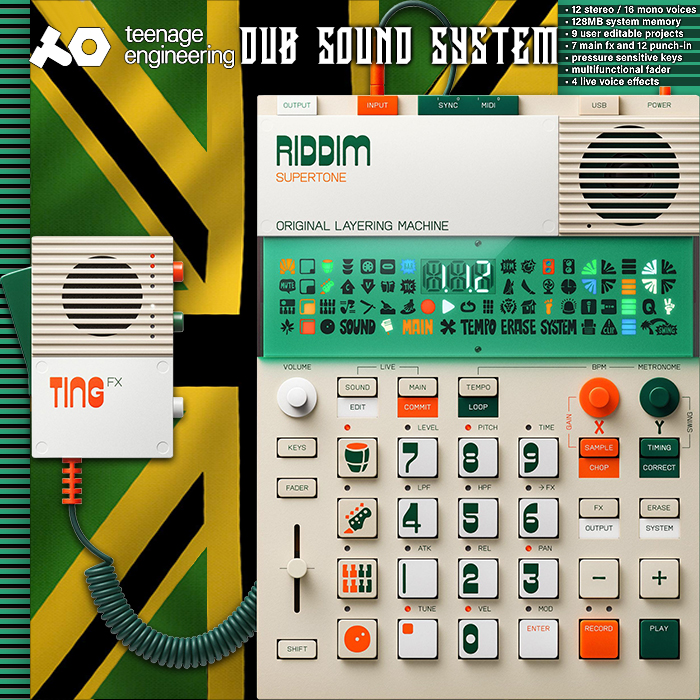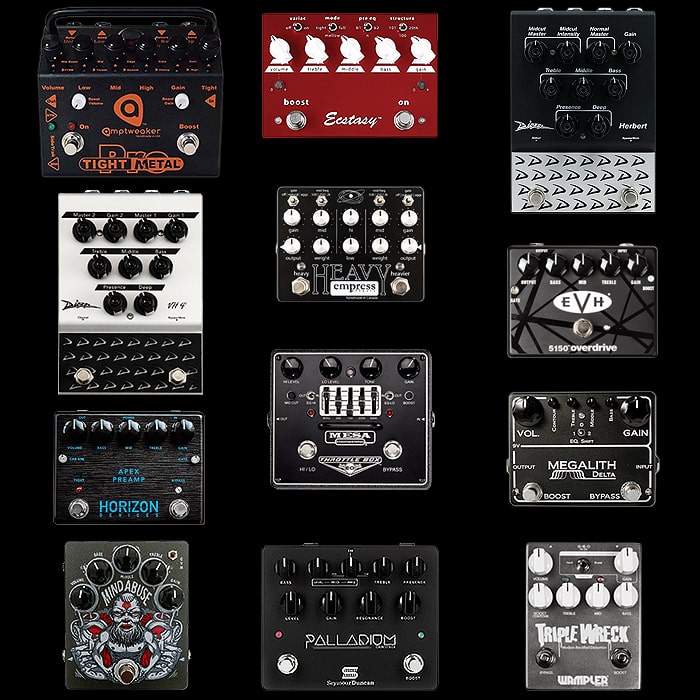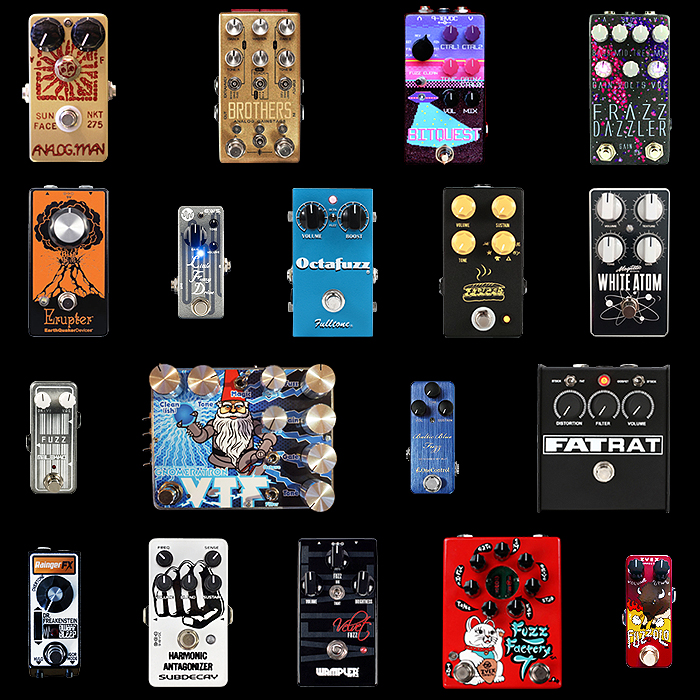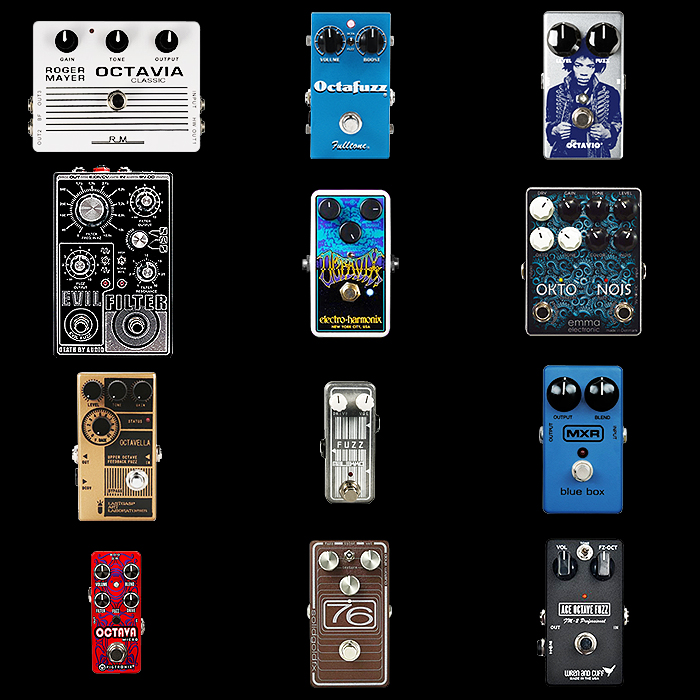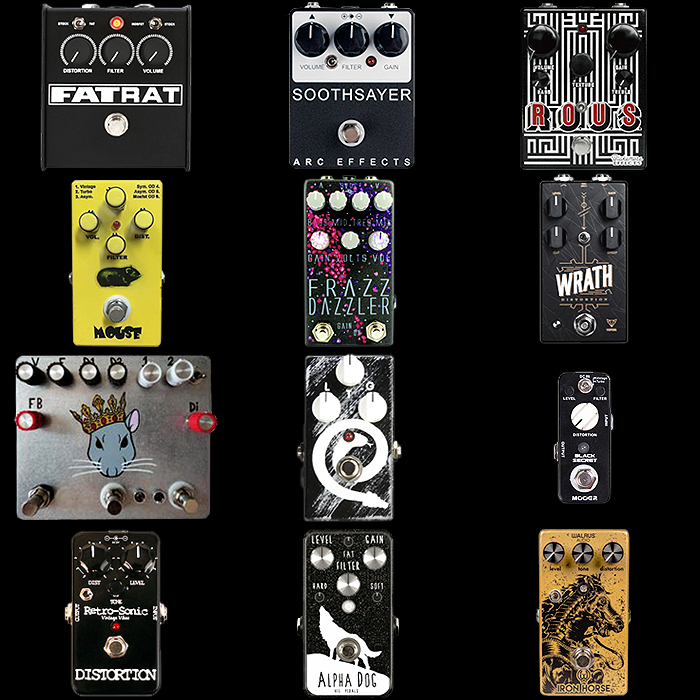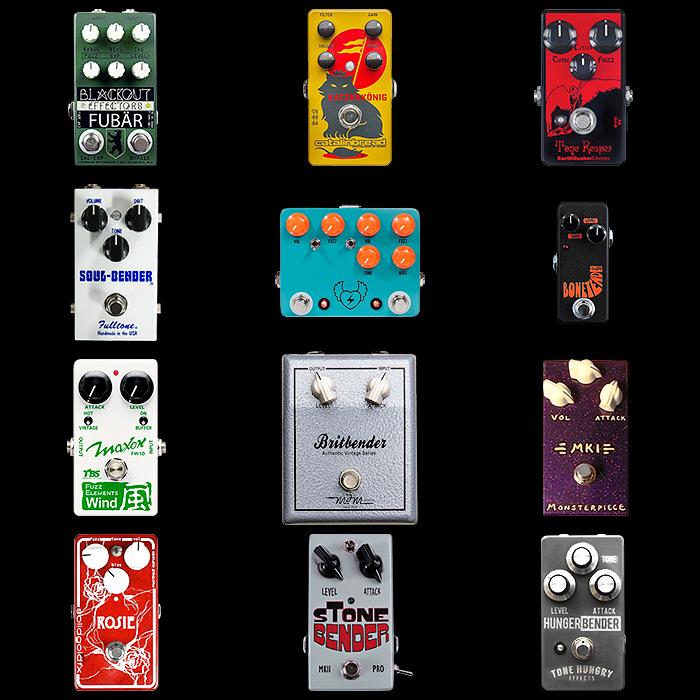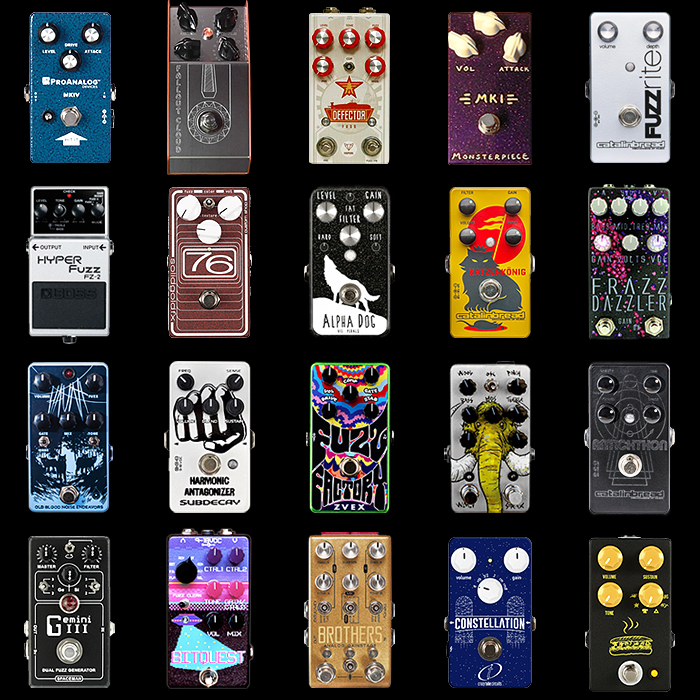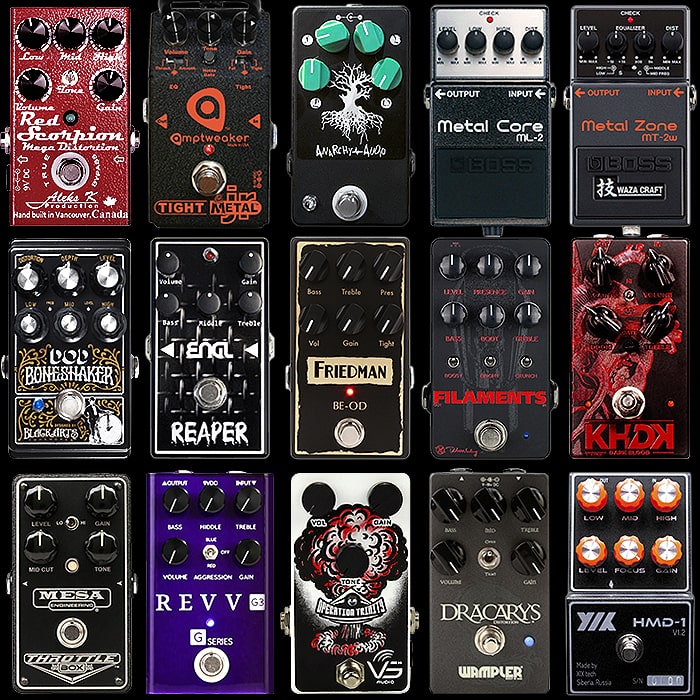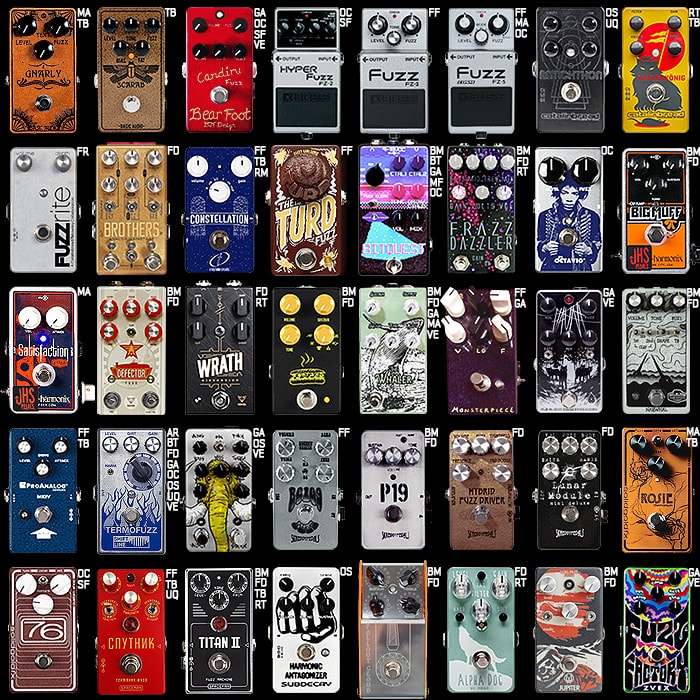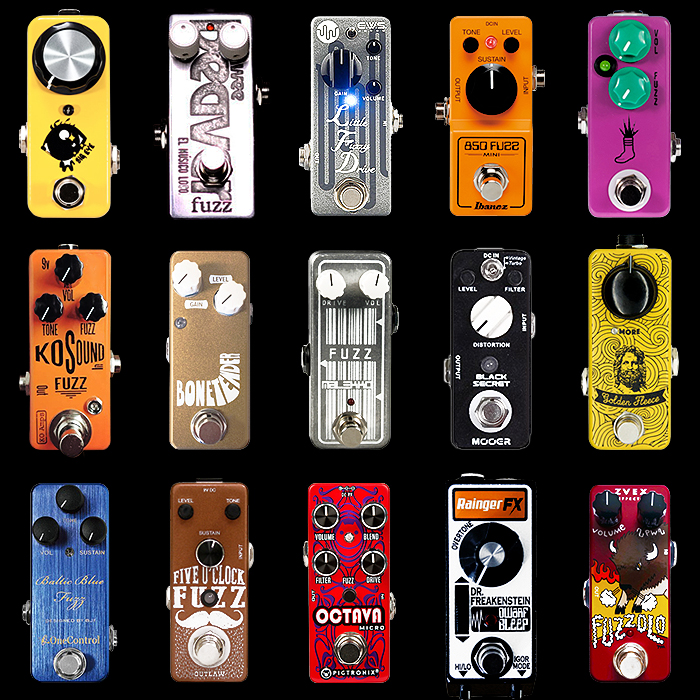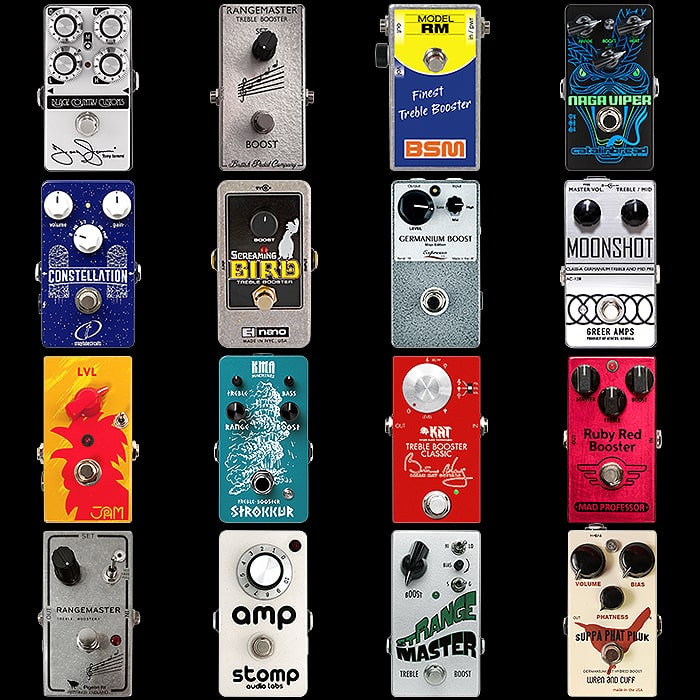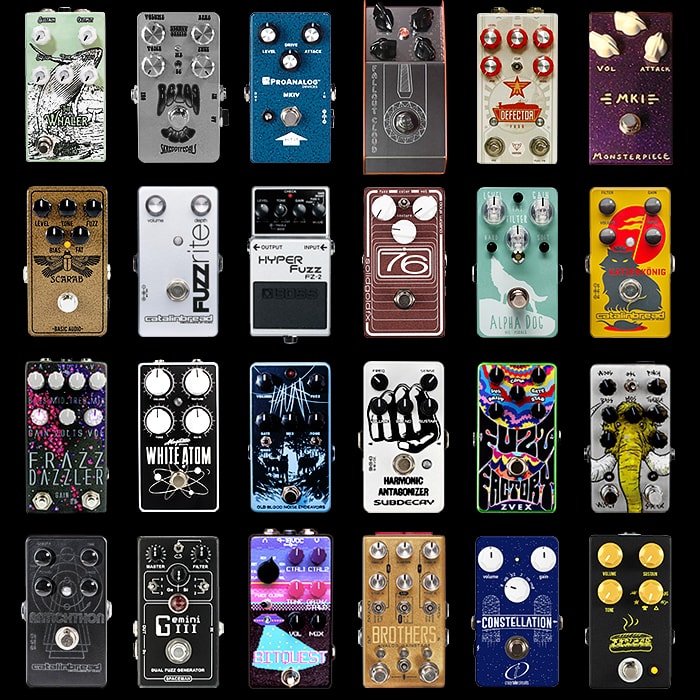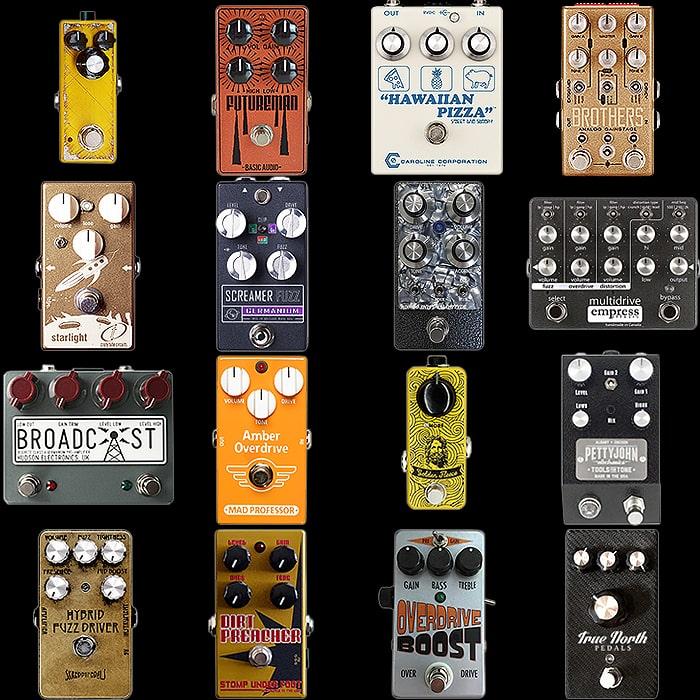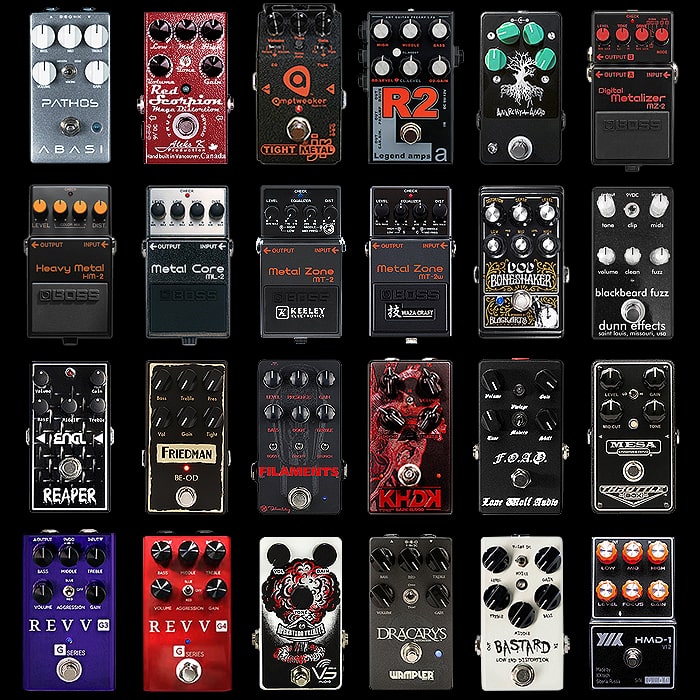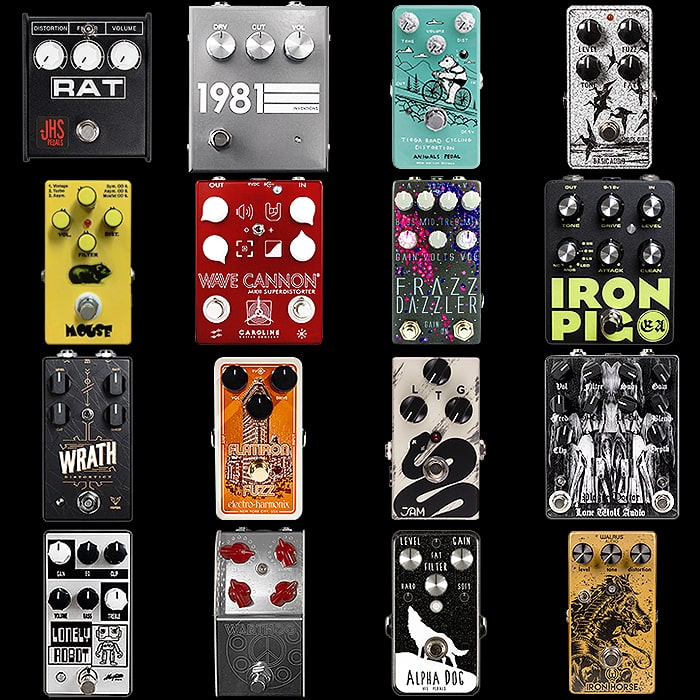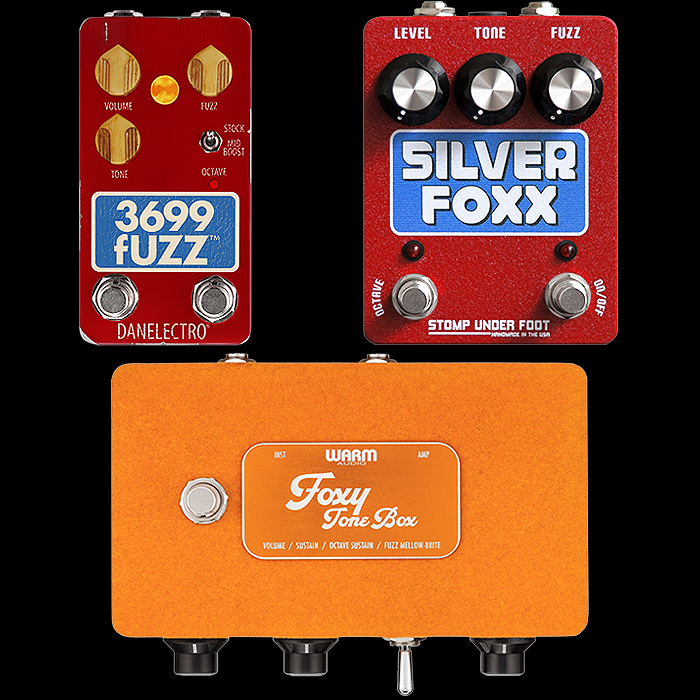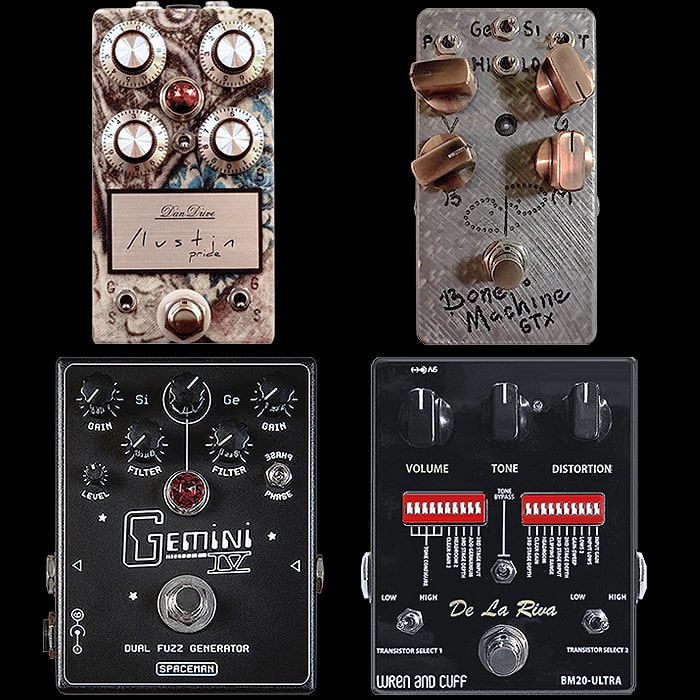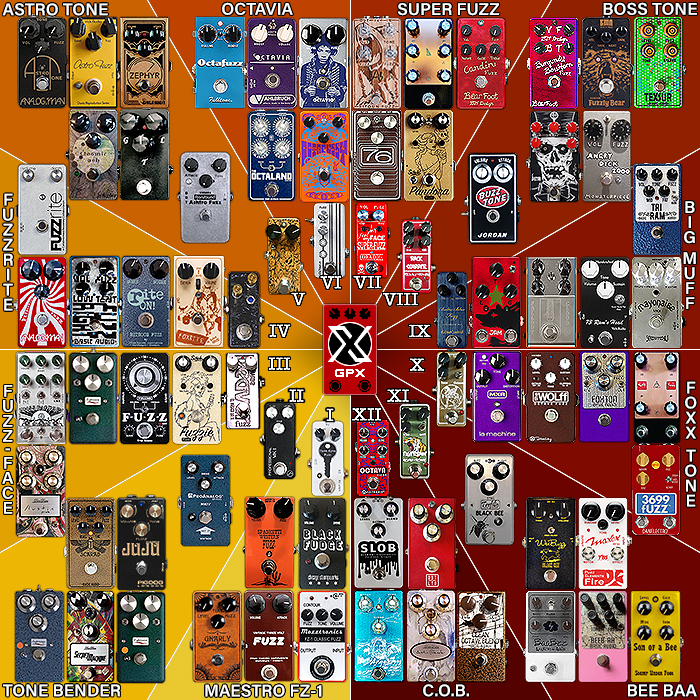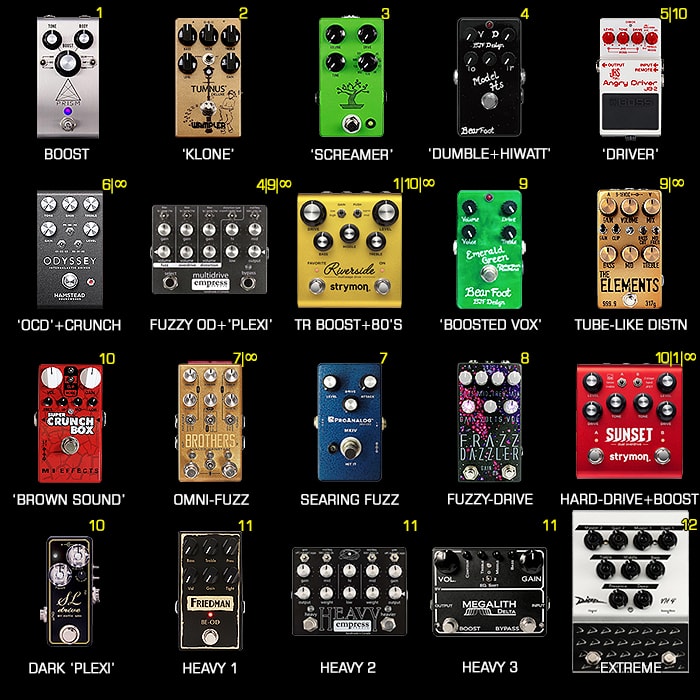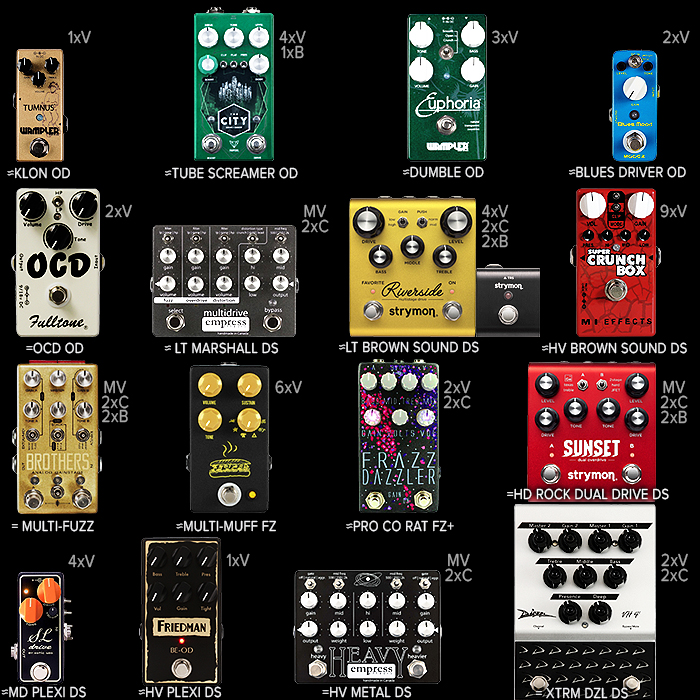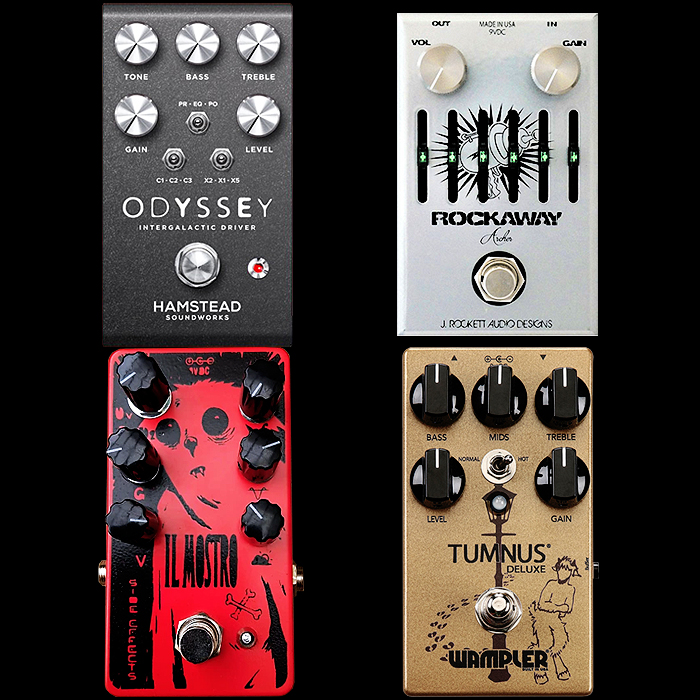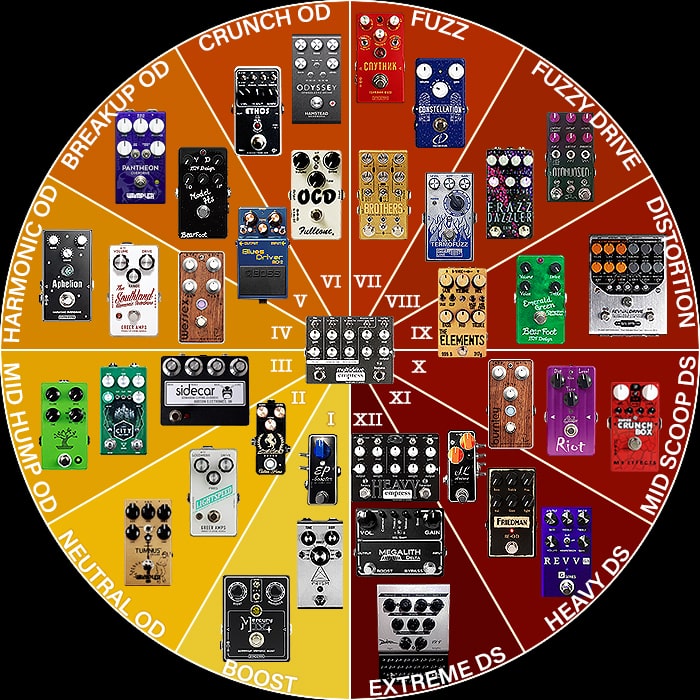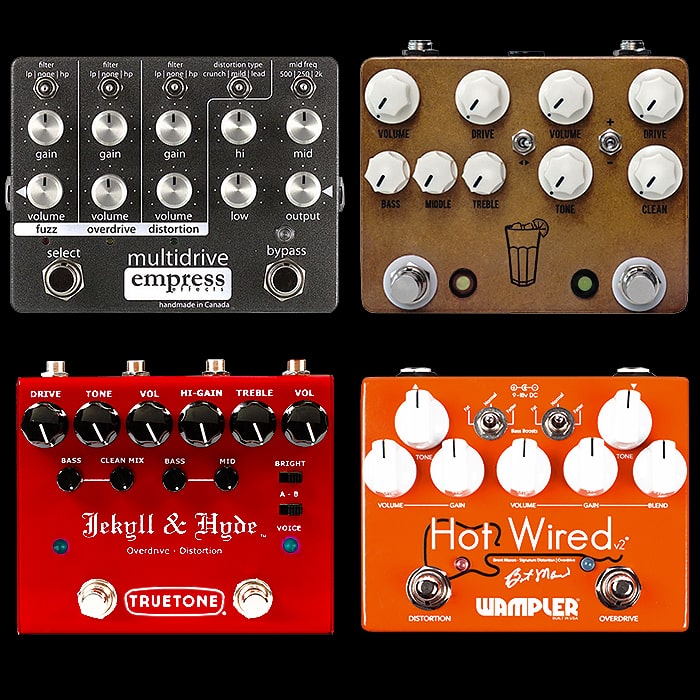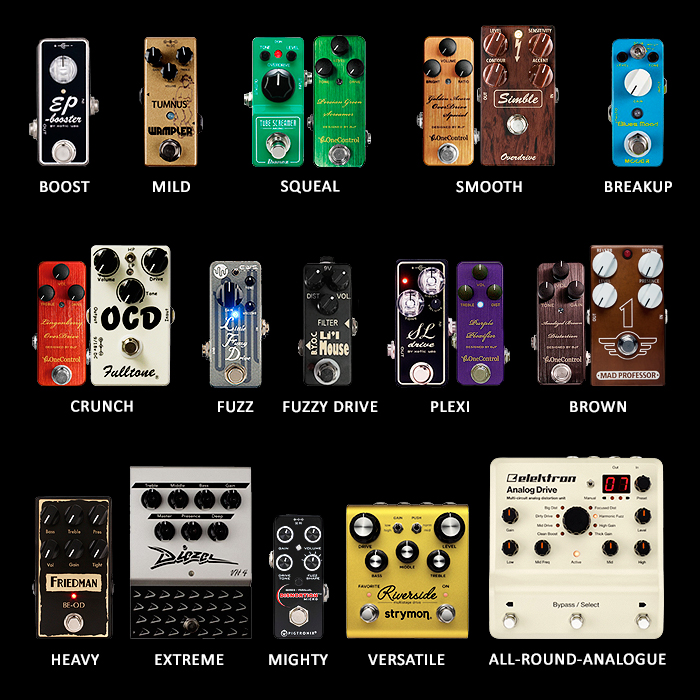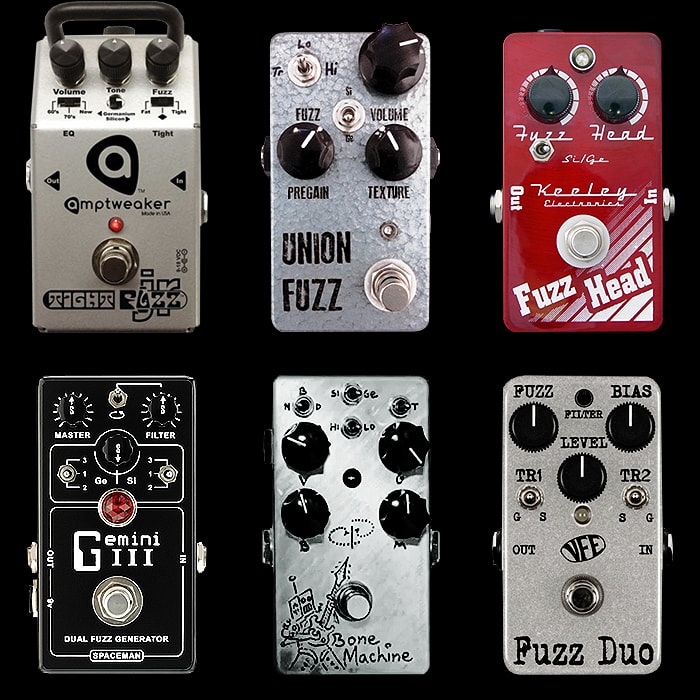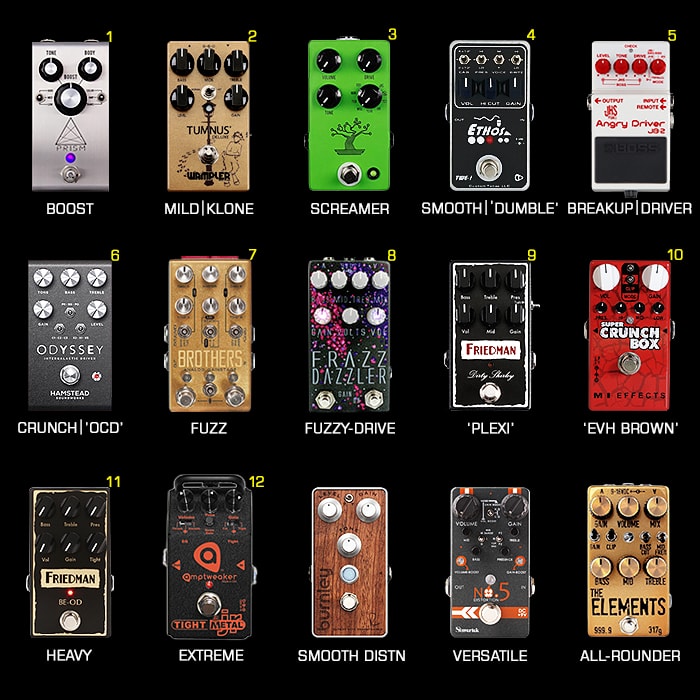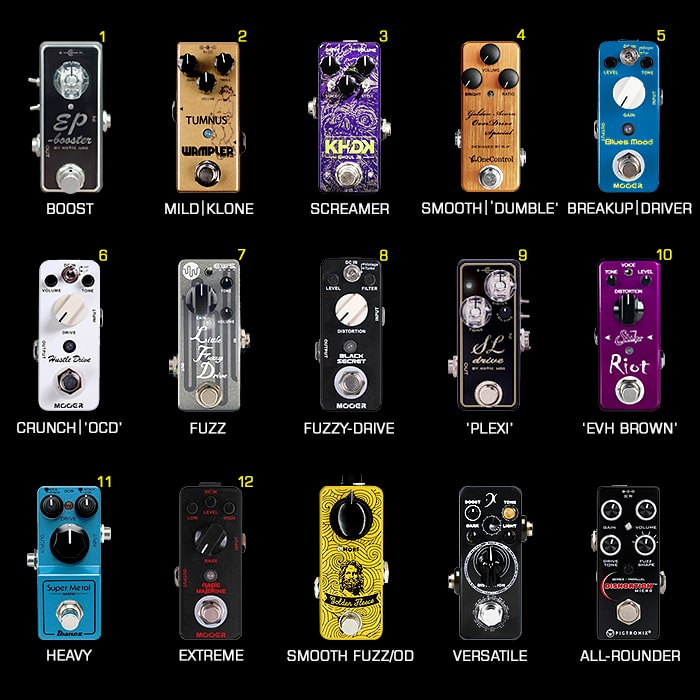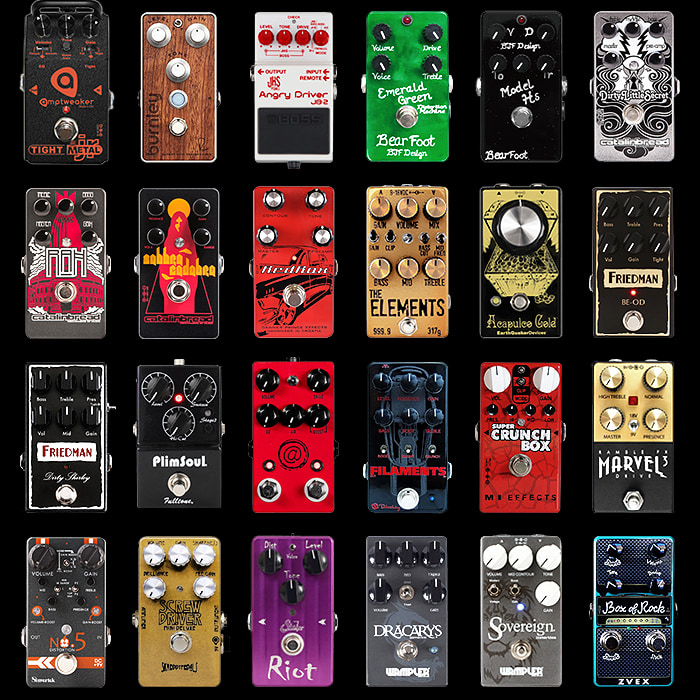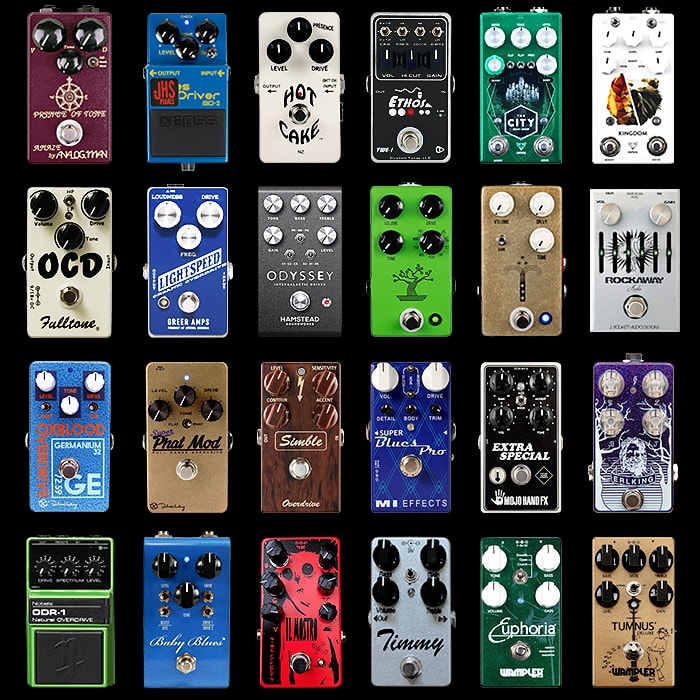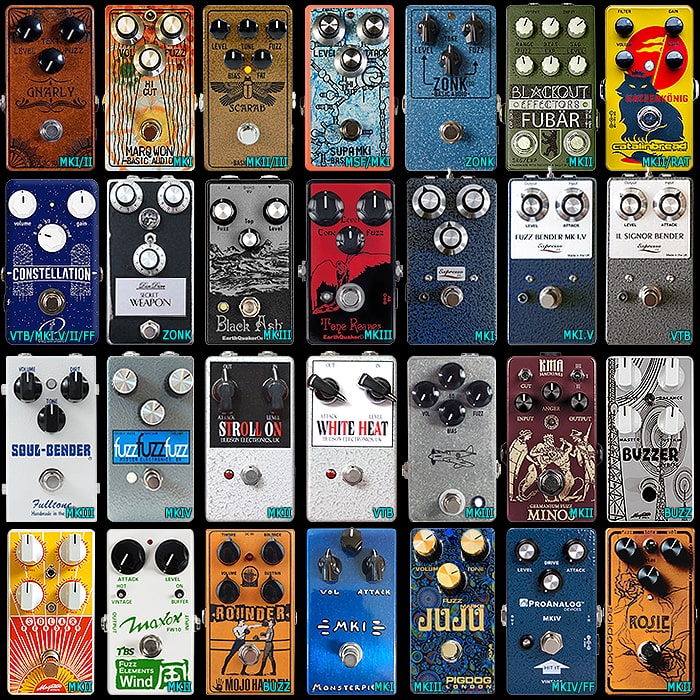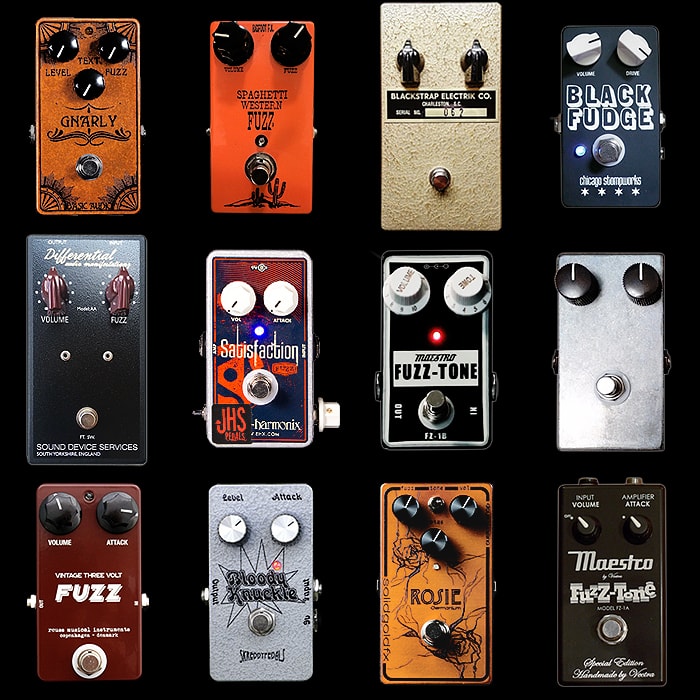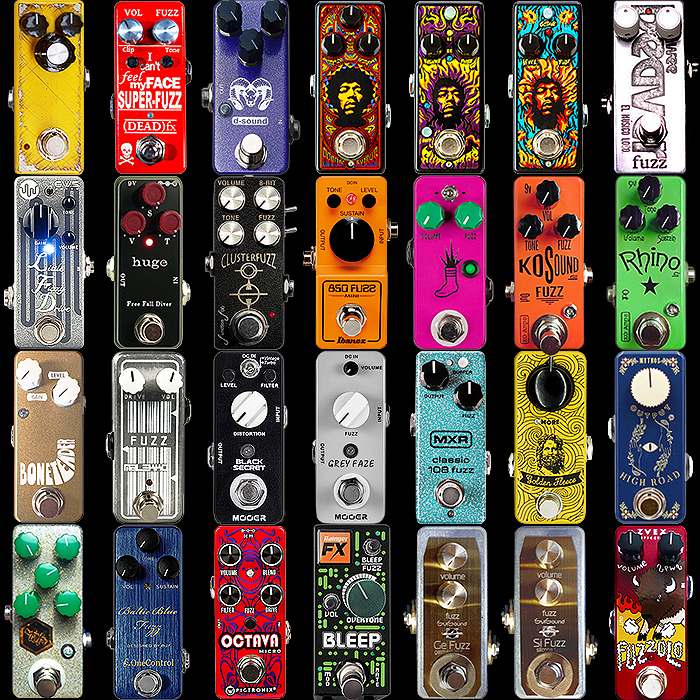16 of the Best Octave Fuzz Pedals - 2019 Edition
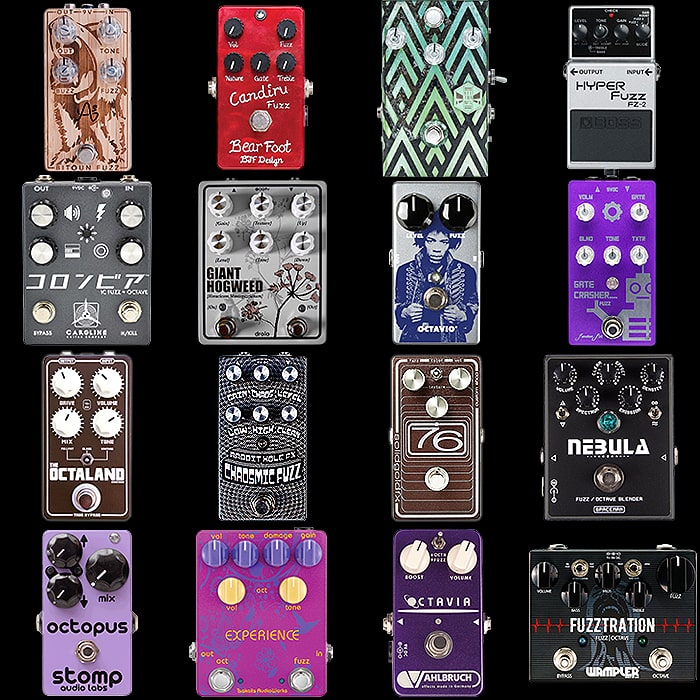
I’ve found myself increasingly interested in Octave Fuzzes these days, and in fact I have two slightly different ones right now in my pedal-chain - the Anasounds Crankled Bitoun near the front of the chain, and the Beetronics FX Octahive around half-way along - they both have quite different timbres and tonalities, and are furthermore set to sound quite different too, but both create incredibly thick and rich fuzz tones.
I really enjoyed JHS Josh Scott’s recent Octave Fuzz YouTube overview (as included below) - where he took the viewer through the history of Octave Fuzz from Roger Mayer and Jimi Hendrix, through the Tycobrahe Octavia, Honey Psychedelic Machine / Shin-ei FY-6 / Univox Super-Fuzz, Ampge Scrambler etc. and on through the various derivations.
Although I am a huge fan of those early innovations, I really don’t like those earlier pedals so much as they typically have all kinds of inconsistencies and idiosyncrasies involving over-sized enclosures, odd power-supply requirements, and lack of proper tone-shaping and volume controls. Many of those earlier fuzzes were really quite binary - either Off, or everything on Full - with few if any workable options in between. This is why I always concentrate on more practical and versatile modern pedals - which capture the essence of the original - i.e. still sound fantastic, but you can power them off your typical supply brick, and easily accommodate them on your board.
As an example - I considered the Fulltone OF-2 Octafuzz for a long time, but decided against it in the end largely on the basis of its odd power requirement - and this is not because I don’t have the supplies and cables to actually run it, but more from a practicality point of ongoing pedal rotation. I have lots of pedals in the collection and I chop and change things around really quite frequently. This means that pedals with unusual power requirements are either a hassle to swap in and out, or can be am actual danger to the board - as if you are quickly swapping things around, you might forget that the previous pedal took a higher voltage supply with a positive centre or alternating current, and plugging in the new pedal will very likely result in its damage. So unless you are intending for a particular pedal to become a fixed feature of your board, it’s not worth the trouble of having one with very peculiar power requirements. Most modern pedals have smart internal circuitry which allows them to double, reverse and condition current and polarity - so stick to those pedals really is my tip.
In my above selection I’ve tried to include the usual mix of favourites and recent releases. The only pedal I share in common with Josh’s overview is the really elegant Stomp Audio Labs Octopus - which features very simple controls for both Octave Up and Down, and buttons to assign fuzz voicing to each.
I actually have 7 from the above listing and a few more besides. There are really lots of different types of octave pedals - whether it is via a certain style of biassing or ring modulation or other filtering / modulation - there are various ways to derive ’octave’ -style fuzz voicings. A number of these are just inherent quirks of particular circuits - artefacts as such (not dissimilar to Amp power-supply related ghost notes). You get a huge variety and degree of octave voicing from subtle, through quirky to fully overblown - which is actually how I like these best.
The vast majority of octave effects are sort of clones and replicas of the original Octavia/Octavio/Super-Fuzz circuits - yet there are all manner of newer ones in the mix too. I discovered so many of these types of pedals that I made the long list of alternatives which sits below. There is certainly no shortage of this type of effect - hopefully I’ve managed to pick off most of the smarter ones for your consideration. Do let me know if you feel I’ve obviously omitted something that should be in my top 16 to alternatives list - and note that I switch things up regularly for sake of variety and increased exposure for pedals and brands you may not have come across before.
In terms of acquisitions - this is another area where I Really don’t need any more - but I’m currently eyeing up the Octopus here, and Wampler’s Fuzztration. Obviously I’m a huge Wampler fan - I would have preferred that pedal though really in the vertical style enclosure for that size - but understand how the control topology fitted best into the horizontal orientation - in any case - plenty to choose from.
Pedals are listed alphabetically by brand:
Anasounds Crankled Bitoun Dual Octave Fuzz : discontinued - €249 when new
I feel this is one of the real secret weapon fuzzes out there - combining two octave fuzz style voices into a really thick and texture tone. The original Bitoun affair was 2-knob version just with volume and tone dials as such (but six internal trim-pots), while the limited (50 units) Crankled edition moves two of the internal trimmers to the exterior - the two key ones as far as I am concerned as they control each of the 2 fuzz voicings - the Crankled version also dimes all the trim-pots for maximum signal destruction and sputteriness - but with almost 0 sustain. While I just dial those back a wee bit, and use more like the original Bitoun voicing - just as saturated, full-throttled and rich as those settings will allow you to go - at those settings this is just a fantastic fuzz - and the interplay between the two voicings - Buzz and Fuzz gives you a tonne of different tones - highly recommended if you can get your hands on one. The Crankled version to me is really just a prettier and more practical / versatile Bitoun - I've suggested to Alex that this be the default arrangement for the V2 version of this pedal - I personally would also like a second footswitch for feedback+boost (Like the CGC Havoc footswitch) for even more outrageous saturation!
Bearfoot FX Candiru 5 Knob Fuzz - £210
Bearfoot's best fuzz pedal in my opinion provides a fantastic mix of Gated, Octave and Velcro styles of fuzz - with amazing interaction between the Fuzz and Nature dials - the Nature dial is some sort of Transistor bias which takes you from velcro through octave and onto more open and searing tones. The Gate dial was formerly an internal trim-pot - and its externalisation allows for better and easier control of the sputtier / spitty side of the pedal. I like powerful searing saturated fuzzes though - typically with the Fuzz dial on max, and with the Nature dial providing the most richly texture octave tone. With it's five dials this pedal is the antithesis of the Fuzz Factory - which is actually pretty tricky to dial in. With the Candiru you get lots of fuzz flavours in a single pedal with the process of dialling in those flavours pretty straight-forward. I have the more limited Germanium Gold version, but I may also spring for the more aggressive and biting nature of the newer Silicon now default edition -as demo's above to such great effect.
Beetronics Octahive Octave Fuzz - £223
The second Octave pedal currently in my chain - and as Rabea's above demo video attests - a properly full-throttled version too. Very simple controls here - Pre is the Input Volume, Honey is the Gain and Vol is the Output - there is then a toggle switch on the side of the pedal which allows you to switch the octave on and off. The interaction between the Pre and Honey dials is what this pedal is all about - delivering all manner of interesting flavours at both sides of the scale. Note that this pedal is definitely over-sized in every dimension when compared with a compact enclosure - and should really have the input jacks top-mounted. I also never really liked the standard enclosure look which somehow neither appeals to me, nor in anyway communicates the properties of this fuzz. So I went for the above Custom Arrowmint edition - which embodies the spirit of the pedal correctly for me - just a slight personal foible there! I generally think the 'Royal Series' of pedals is significantly better designed - even though I would have preferred my Royal Jelly in the later black livery! Beetronics are typically fantastic pedals inside and out - but I do wish they could be a touch more compact!
Boss FZ-2 Fuzz - c£120-£200 lightly used / pristine (Reverb.com / Ebay)
I'm still kind of surprised that Boss haven't thought to reissue this fuzz, that and the HM-2 obviously currently. This is essentially Boss's take on the Shin-Ei / Univox Super-Fuzz Octave Fuzz with 2-band EQ and 3 different modes of increasing gain stages - Gain Boost, Fuzz I and Fuzz II. It's quite a strident Octave Fuzz, a little too edgy for some, but perfect for others as it cuts through the mix really well. There's still a lot of demand for this one, and a whole side-industry of clone makers. Pristine versions go for around £200 nowadays, and I lucked out when I got mine on Ebay for around £120 at the start of last year I think it was. This all analogue circuit is one of the favourite cult fuzzes - and Boss should really consider re-releasing this some day soon as a Wazacraft edition.
Caroline Guitar Company Shigeharu Octave Fuzz - £199
For whatever reason I somehow managed to overlook CGC pedals in the past - I guess I just wasn't properly exposed to them, but I've gained a new-found admiration for them of late - particularly on the fuzz-side of things with their Hawaiian Pizza, Haymaker, Wave Cannon and this Shigeharu Octave Fuzz. I guess I was partly put off by the over-sized medium enclosures - as you know I have a preference for compacts. Yet most of these have dual footswitches and fully justify their enclosure format - while part of me is pretty sure they could slim most of these pedals down to compact size if they so wanted. In any case these are well-crafted circuits which typically sound fantastic. You just need to get your head around the different symbols to understand the different controls - which in this case are Level, Drive/Gain, Tone and Body - with small 'Havoc' knob and separate footswitch for a sort of overload feedback effect. This is just the kind of Octave fuzz I like - all full-throttled, searing and thick.
Drolo Giant Hogweed Octave Up+Down Fuzz - €150 (Direct)
From David Rolo of Molecular Disruptor and Stammen[n] fame - this is a 2-way direction analog Octave Up/Down fuzz which combines with a Rat-style OpAmp fuzz circuit. You have 6 controls - Gain, Texture, Up, Level, Tone and Down. The tone control is of the Big Muff style - being simultaneously additive and subtractive for the High and Low end - depending which end of the scale you are. You have a separate footswtich to activate the Octave, and you control via individual dials - whether you want Octave in one or both directions, and how pronounced. It's a cool circuit, but the analog octave is monophonic - and so glitches out on chords - which is how some of us like it!
Dunlop JHM6 Jimi Hendrix Octavio Fuzz - c£100-£130
These are the latest of the MXR-box-style Octavio special editions as opposed to the typical Dunlop / Dallas Arbiter disc-shaped enclosures. I of course much prefer the more compact enclosure. This is the simplest pedal in the list with just straight up Level and Fuzz controls. It's a simple pedal which sounds great - and you can get it for as little as £100 if you shop around. This is very much the classic Octavia/o tone - while the Super-Fuzz style fuzzes tend to be somewhat more biting and gnarly. Rob Chapman has the precious special edition of this and holds this as his favourite fuzz pedal as far as I understand.
Function F(X) Gate Crasher Octave Fuzz - £169
This is one of the newer Octave Fuzzes on the list - from Function F(X) of Clusterfuzz fame. In some ways not too dissimilar in approach to the above Candiru. You get 5 dials - Volume, Gate, Dry Blend, Tone and Texture. The Blend knob means that this fuzz is good for basses too. And like the Candiru it plays with the gated / velcro setting for even more accentuated texture. A pretty decent proposition all-round - and suitably harmonically rich sounding.
King Tone Octaland Mini Octave Fuzz - $299 (Direct)
I've come across this pedal a couple times recently - possibly both times on Josh Smith's pedalboard - and most recently on the Captain Anderton Meets... episode. King Tone is of course best known for its Duellist pedal - a sort of alternative to the King of Tone, but I'm more interested in its line of 'Mini' or actually Compact fuzz pedals. I wish people would stop mis-using the Mini moniker - Mini is for those classic Mooer pedals - Compact is the regular size - as popularised by Boss and MXR - why EHX call this size Nano and King Tone call it Mini is just misguided really. So King Tone have 3 cool compact fuzz pedals - Silicon and Germanium 'Minis' with smart auto-biasing, and this smart 4-knob Octave pedal. You have Drive, Volume, Mix and Tone dials, alongside a 3-way sort of voicing / EQ Shift switch - Full Fat / Glass / Vintage. This is obviously a quality pedal made with premium components, but it's still rather pricey as far as I see it - I will need to wait for it to come down a level or hit the Labor Day sale!
Rabbit Hole Chaosmic Fuzz - $239
Rabbit Hole is essentially Safia Harrison's own boutique build company in Durham, North Carolina where she produces a perfectly neat and compact range of pedals including 2 interesting fuzzes - of which the Chaosmic one is the slightly more interesting one for me. I feel that the pedal could have done with a CGC-style Havoc footswitch for even more craziness, but the pedal is plenty crazy as it is mixing up - Gain, Chaos, Level, Low, High and Clean Blend controls to great effect. This pedal is based on the Ampeg Scrambler Fuzz in a somewhat tidier enclosure - it sounds great if you like things really gnarly - lots of odd gating velcro-y tones here.
SolidGoldFX 76 Octave Fuzz Rust Edition - c£139
As per Mike Hermans' superb demo above - this pedal is capable of some really smooth germanium tones as well as the more noisy spiky stuff. Just as the ThorpyFX Fallout Cloud is the fuzz for those players who don't really like fuzz, this is the equivalent for the Octave genre - there's just a vast library of cool tones to be had here, quite different from the more gated and velcro-ish styles of octave fuzz. That doesn't mean that the 76 can't do gnarly too if it needs to. This was my first target when I did my original Octave fuzz sweep - just real quality all-round! I don't really like the banana-coloured original livery, so I went with the custom Rust edition (aka Aged Copper?) - which has come down in price a lot since - actually may be mostly sold out now - there's also a sort of mint/Evergreen version doing the rounds on Reverb.com.
Spaceman Effects Nebula Fuzz Octave Blender - from £299
I got my Moonrock Edition right on the initial announcement - I expected that version to be more popular than it was but it took several months to sell out of its 55 unit allocation - the standard silver version of course was snapped up pretty instantly. This is a particularly versatile octave fuzz with a number of rather unique controls. The dials are as follows - Volume, Clean Effect (Dry/Wet Blend), Density (Clean Octave/Fuzz Blend, Spectrum (Tone) and Emission (Gain). You have two further toggle-switches - a 3-way EQ shift on the left for Flat, Mid Scooped or High Boost, and an 'Infinity' switch on the right which introduces a second Octave and further artefacts. This is a really cool fuzz, but I feel it could do with just a touch more 'noise' and aggression. It's also not the thickest of the octave fuzzes - which is the texture I typically go for. Nevertheless this is a pretty unique and versatile fuzz well worth having in you fuzz arsenal.
Stomp Audio Labs Octopus Octaver/Fuzz - $199 (Reverb.com/Direct)
This is the one pedal I'm sharing with Josh Scott of JHS - he first introduced me to it during his favourite pedals of 2018 overview, and he featured it again in his recent Octave Fuzz overview. This is a beautifully elegant and simple analog pedal. Just three dials - Mix (Dry to Octave Mix), Octave Up Volume, and Octave Down Volume. You can run it as just a stand-alone Octaver or you can hit the buttons next to each Up/Down volume dial to activate the fuzz circuit on either or both octaves. This brand is not currently stocked in the UK - but is available on Reverb.com - courtesy of Guitar Pedal Shoppe. This one is definitely on the wishlist and will be added to the collection later in the year.
Tsakalis AudioWorks Experience Octave Fuzz - £199
This is a rather elegant 2-channel Fuzz and Octave pedal - each effect activated by its own channel footswitch. The Fuzz is a 2 x vintage transistor type with Volume, Tone, Damage and Gain controls - where the Damage dial is a sort of bias / gating control which yields Horn/Trombone tones at full crank and full open fuzz distortion when anti-clockwise. The two silicon transistors sound great, and the two volume controls allow you to blend the two effects together, to great effect as it were!
Vahlbruch Octavia Octave Fuzz - €185
I meant to get this one a while back when I first saw it on That Pedal Show - during the Simon McBride episode - it sounded phenomenal back then and it's been up and down the wishlist at different levels of priority. It's the second simplest pedal listed here after the Dunlop Octavio - it has the two dials - Boost (Gain) and Volume, as well as a toggle-switch to engage or disable the Octave effect - so you can run it as a plain fuzz if you wish. Really simple and elegant - and utilising silicon transistors as far as I understand, this is another great option worthy of consideration.
Wampler Fuzztration Octave Fuzz - £189
When I first saw this I was disappointed that it was the horizontal rather than the more practical vertical orientation of classic Wampler medium enclosures. I soon realised though the clever symmetry of the controls, and understood why Brian chose this variation. You get 3-band EQ, Tight and Open voicing, and a separate Octave activation footswitch which you place before or after the fuzz depending on whether you want a deeper more aggressive effect, or prefer it slightly more subtle. Brian is always very straight-laced and practical in his pedal design, and he delivered two more classics last year with this one and the Pantheon. The Pantheon went straight onto the pedal-chain, but it took me a little while to warm up to this one for whatever reason. Right now though it's the next likely acquisition from this overview.
Further Alternatives
I knew there were a number of Octave fuzz pedals out there, but did not realise quite how many. Much like with the Rat-style fuzzes I decided I should make a list of all the alternatives I could think of - in case I missed out one of your favourites above - or if you were looking for further alternatives. Note also that I'm actually pretty keen on the supremely gnarly Animal Factory Chemical Burn Fuzz (above) - which is another one of these that has been up and down the wishlist. In any case this is a sort of reference list - as much for my benefit as yours!:
- 3Leaf Audio Doom Dynamic Harmonic Device Octave Fuzz
- 3Leaf Audio Octabvre Octaver
- Ampeg Scrambler Octave Fuzz
- Anarchy Audio Sentinel Octave Fuzz
- Animal Factory Animal 1 Chemical Burn Octave Fuzz
- Basic Audio Super Fuzz Octave Fuzz
- Bearfoot FX Pink Purple Octave Fuzz
- Beetronics Whoctahell Sub-Octave Fuzz
- Big Ear NYC Chaka Octave Fuzz
- Big Foot Engineering Octo Puss Prime Octave Fuzz
- Black Arts Toneworks Fnord Octave Fuzz
- Black Cat Super Fuzz Octave Fuzz
- Blackout Effectors Crystal Dagger Silver Octave Fuzz/Phaser/RingMod
- Blue Colander Lawrence Octave Fuzz
- Boss FZ-5 Fuzz
- BYOC Octavos Fuzz
- Cast Engineering Gypsy Haze Octave Fuzz
- Catalinbread Octapussy Octave Fuzz
- Catalinbread Perseus Sub-Octave Fuzz
- Chase Tone Purple Stardust High-Octave-Fuzz
- Chicago Iron Tycobrahe Octavia Octave Fuzz
- Copilot FX Mantis Glitchy Octave Fuzz
- Crazy Tube Circuits Pin Up Octave Fuzz
- Cusack Music Sub Fuzz Suc-Octave Fuzz
- Damnation Audio Ugly Tein Octave/Fuzz/Boost
- Dan Armstrong Green Ringer
- Danelectro French Toast Octave Fuzz
- Daredevil Pedals Daisho Octave Fuzz
- Death By Audio Absolute Destruction Overload Fuzz
- Death By Audio Apocalypse Fuzz
- Death By Audio Evil Filter Octave Fuzz
- Death By Audio Robot 8-bit Fuzz Octaver
- Del Rey Custom Shop Superfuzzilla Octave Fuzz
- Demeter Amplification Fuzzy Octavulator Octave Fuzz
- Devi Ever Godzilla Octave Fuzz
- Diamond Pedals F-Octave Fuzz
- Dr. No Octofuzz Octave Fuzz
- Dr. No RoadRunner Fuzz Wah Octavia
- DS Custom Experience Octave Fuzz
- Dunable Splatternlaster Dual Fuzz/Distortion
- Dwarfcraft Devices Milwaukee Psych Fuzz
- Dwarfcraft Devices Necromancer Fuzz
- Earthquaker Devices Fuzz Master General Octave Fuzz
- Earthquaker Devices Hoof Reaper V2 Dual Fuzz + Octave
- Electro Faustus EF115 Super Disruptor Sub-Octave Fuzz
- Electro-Harmonix Octavix Fuzz
- Emma Electronics Okto-Nøjs Sub-Octave Fuzz
- Fender 4-knob Fender Blender
- Foxx Tone Machine Red Velvet Octave Fuzz
- Fredric Effects Dresden Synth Fuzz
- Fredric Effects Grumbly Wolf
- Fredric Effects Jackdaw Esoteric Synth Fuzz
- Fredric Effects Scrambled Brainz Octave Fuzz
- Fredric Effects Standard Fuzz Machine Octave Fuzz
- Fredric Effects Unpleasant / Deeply Unpleasant Companion
- Fulltone OF-2 Octafuzz
- Fulltone Ultimate Octave
- Function F(X) The Cannon Dual Fuzz
- FuzzHugger (FX) Phantom Octave Fuzz
- FuzzHugger (FX) Sonic Bloom Fuzz
- FuzzHugger (FX) Sonic Shroom
- Fuzzrocious Demon King + Octave Jawn
- Fuzzrocious M.O.T.H. + Octave Jawn
- Fuzzrocious Grey Stache Fuzz with Octave Jawn
- Geargas Custom Shop Blender Octave Fuzz
- GNI Music POC Octa Fuzz
- Greer Amps Super Hornet BC107-B Octave Fuzz
- Harben Audio Octave Fuzz
- Hartman 8VA Octave Fuzz
- Henretta Engineering / Maniac Music Factory Purple Haze Octave Fuzz
- Henretta Engineering Purple Octopus Octave Up
- HomeBrew Electronics UFO Ultimate Fuzz Octave
- Honey Psychedelic Machine
- Hudson Electronics Blackbird Octave Fuzz
- Ibanez No. 59 Standard Fuzz
- Idiotbox Lost Ark PLL Octave Glitch Synth
- JDM Humdinger Octave Fuzz
- Joe Gore Screech Octave Fuzz
- Joyo JF-12 Voodoo Octave Fuzz
- Katnasound Volcanic Eruption Octave Fuzz
- Kay Fuzz Tone Octave Fuzz
- Keeley Monterey Fuzz/Octave/Rotary/Vibe/Wah Workstation
- Keeley The Wolff Octave Fuzz
- KHDK / Dark Matter Unicorn Blood Octave Fuzz
- KMA Machines Fuzzly Bear Fuzz
- KMA Machines Queequeg Subgenerator Octave Down Fuzz
- Lastgasp Art Laboratories Gomorrah Input Sensitive Subharmonic Fuzz
- Lastgasp Art Laboratories Octavella Fuzz
- Lastgasp Art Laboratories Yonroku Shiki Kebadate Hizumaseki Sooper Fuzz
- Lone Wolf Audio Overdose/Overload Octave Fuzz
- Lovepedal Believe Octave Fuzz
- Lovepedal Monkey Fist Octave Fuzz
- Maestro Brassmaster Octave Fuzz
- Malekko B:assmaster Octave Fuzz
- Malekko Diabolik Octave Fuzz
- Malekko Omicron Octave Fuzz
- Malekko Wolftone Helium MKII Octave Fuzz
- Maxon FA10 Fuzz Elements Air
- Maxon FE10 Fuzz Elements Ether
- Maxon FV10 Fuzz Elements Void
- Menatone Chawbox Octave Fuzz
- MI Effects Pollyanna Octave Synth/Fuzz
- MidValleyFX Fuzz Vision Octave Up
- MidValleyFX Mad Robot Octave/Oscillating Fuzz
- Mojo Gear Fuzz No. 8 Tychobrahe Octave Fuzz
- MXR BFG07 Billy Gibbons signature Octavio Fuzz
- MXR CSP203 La Machine Fuzz
- MXR M103 Blue Box Sub-Octave Fuzz
- MXR M225 Sub Machine Sub-Octave Fuzz
- MXR SF01 Slash Octave Fuzz
- Mythos Argo Octave Fuzz
- Occvlt Pedals Vintage Octave Fuzz
- Orange Fur Coat Octave Fuzz
- Orion Effekte Wildkraut Sub-Octave Fuzz
- Parasit Studio Arcadiator Octave Fuzz
- Paul Trombetta Design Rotobone Boost/Overdrive/Fuzz/Octave/RingMod
- Pepers' Pedals Superior Octave Fuzz
- Pigeon FX Companion Fuzz Master
- Pigtronix Octava Micro Octave Fuzz
- Pigtronix Distortion - Octave/Fuzz/Overdrive
- Prescription Electronics Experience Octave Fuzz
- Proanalog Devices Ascension Octave Fuzz
- Rabbit Hole FX A 'Merkin Fuzz
- Randale Pedal Supra Octave Fuzz
- Recovery Effects Couple Skate KMII Fuzz Octave
- Retroman Hi Octane Germanium + Octave Fuzz
- Reuss Octaviaze Octave Fuzz
- Roger Mayer Octavia Classic Fuzz
- Roger Mayer Octavia TC
- Roger Mayer Rocket Octavia Fuzz
- Sekova No.99 Deluxe Alternado Fuzz
- Shin-Ei FY-2 Companion Fuzz
- Shin-Ei FY-6 Apollo Super Fuzz
- Shin-Ei Honey FY-6 Super Fuzz
- Shin's Music Octafuzz Spectron Octave Fuzz
- Skreddy Cephalopod Octave Fuzz
- Smallsound/Bigsound Buzzz Octave Fuzz
- Smitty Pedals Suppa Octa Fuzz
- Snazzy Fx Mini-Ark Fuzz Octave Analog Synth
- Sobbat Fuzzbreaker Octave Fuzz
- SolidGoldFX Formula 76 Octave Fuzz
- Tone City Fuzz Fuzz
- Suhr Rufuz Reloaded Fuzz
- TWA Krytical Mass Octave Up/Down Filtered Fuzz
- Tycobrahe Octavia Fuzz
- Univox Super-Fuzz
- VFE Woodchipper Sub-Octave Fuzz
- Voodoo Lab Proctavia Octave Fuzz
- Way Huge Piercing Moose Octave Fuzz
- Way Huge Purple Platypus Octidrive MKII Fuzz
- Wilson Effects Octave Up Fuzz
- Wren & Cuff Ace Octave Fuzz
- XIX Tech BFZ-1 Octave Up Fuzz
- Zander Effects Foxxton Woods Octave Fuzz
- Zorg Effects Zorgtaver Octaver Fuzz
Final Thoughts
I've included Josh Scott's excellent recent Octave Fuzz history and overview, even though we just overlap on one pedal on this occasion!
As mentioned several times now - you are most definitely not starved for choice here at any level - size or price-point. I will do a further follow-up post in my now usual Mini, Compact, Medium and Large enclosure style. I am obviously one of many who loves the octave fuzz sound and while I have a number of these already - including 7 in the above listing, there is always place for one or two more.
There's a few other pedals I could have included here, but I have mentioned them in other overviews - so my mission is of course also to introduce you to new options and choices - and hence I pick a mix of old favourites, some unusual ones, and some recent additions.
There are many here I would not mind adding to the collection - while the likeliest candidates for acquisition are the Fuzztration and Octopus as mentioned. As always if I come across one of these others at an appealing price point, then the priorities are likely to shift again. Actually I really like the Octaland too - but it's pricey - so will see what opportunities arise on that score.
Hopefully the selection above is sufficient to give you a good grasp of what is available, and where it may serve you best to spend your money. Happy ToneQuesting!

